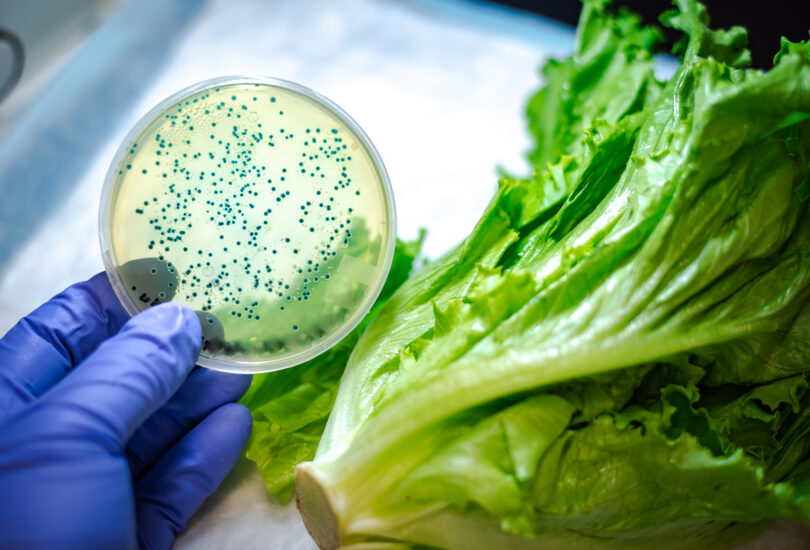マウスと霊長類で強力な免疫反応を示した有望なワクチン技術 Promising vaccine technology has generated strong immune responses in mice and primates
2022-08-10 ミネソタ大学
 A University of Minnesota assistant professor is part of a team that has developed a new way to effectively deliver vaccines through the nose that could lead to better protection against diseases like HIV and COVID-19. Photo credit: Hartwell Immunoengineering Lab, University of Minnesota
A University of Minnesota assistant professor is part of a team that has developed a new way to effectively deliver vaccines through the nose that could lead to better protection against diseases like HIV and COVID-19. Photo credit: Hartwell Immunoengineering Lab, University of Minnesota
ワクチン抗原が鼻の粘膜バリアを通過するのを助ける方法を発見した。この方法は、ワクチン抗原を、人体に自然に存在し、これらの障害を回避する能力を有するアルブミンというタンパク質に結合させるように設計することである。抗原は、アルブミンに効率よく「ヒッチハイク」して、目的地である鼻の中の免疫組織に到達し、免疫反応を活性化させることができるのである。
さらに、このワクチンは、鼻だけでなく、上気道、肺、泌尿器などの粘膜組織にも有効であることが判明した。
<関連情報>
- https://cse.umn.edu/college/news/new-method-nasal-vaccine-delivery-could-lead-better-vaccines-hiv-and-covid-19
- https://www.science.org/doi/10.1126/scitranslmed.abn1413
脂質結合型免疫原の経鼻ワクチン接種により、抗原の経粘膜吸収が促進され、粘膜および全身性免疫が誘導される。 Intranasal vaccination with lipid-conjugated immunogens promotes antigen transmucosal uptake to drive mucosal and systemic immunity
Brittany L. Hartwell ,Mariane B. Melo ,Peng Xiao ,Ashley A. Lemnios,Na Li,Jason Y.H. Chang ,Jingyou Yu ,Makda S. Gebre ,Aiquan Chang ,Laura Maiorino ,Crystal Carter ,Tyson J. Moyer,Neil C. Dalvie,Sergio A. Rodriguez-Aponte ,Kristen A. Rodrigues ,Murillo Silva ,Heikyung Suh,Josetta Adams,Jane Fontenot ,J. Christopher Love ,Dan H. Barouch ,Francois Villinger ,Ruth M. Ruprecht,Darrell J. Irvine
Science Translational Medicine Published:20 Jul 2022
DOI:DOI: 10.1126/scitranslmed.abn1413
Winning by a nose
Despite the fact that many viruses initially enter the body through mucosal surfaces, most vaccines are administered by nonmucosal routes. This is, in part, due to historically poor development of immune responses after mucosal immunization. To address this, Hartwell et al. developed lipid-conjugated immunogens, called amph-proteins, and administered them intranasally to mice and nonhuman primates; these vaccines, which used the neonatal Fc receptor to mediate transmucosal uptake, elicited immune responses at both local and distal mucosal sites. These data support further development of amph-protein–based intranasal vaccines for immunogens such as the SARS-CoV-2 receptor binding domain and the HIV envelope protein, among others.
Abstract
To combat the HIV epidemic and emerging threats such as SARS-CoV-2, immunization strategies are needed that elicit protection at mucosal portals of pathogen entry. Immunization directly through airway surfaces is effective in driving mucosal immunity, but poor vaccine uptake across the mucus and epithelial lining is a limitation. The major blood protein albumin is constitutively transcytosed bidirectionally across the airway epithelium through interactions with neonatal Fc receptors (FcRn). Exploiting this biology, here, we demonstrate a strategy of “albumin hitchhiking” to promote mucosal immunity using an intranasal vaccine consisting of protein immunogens modified with an amphiphilic albumin-binding polymer-lipid tail, forming amph-proteins. Amph-proteins persisted in the nasal mucosa of mice and nonhuman primates and exhibited increased uptake into the tissue in an FcRn-dependent manner, leading to enhanced germinal center responses in nasal-associated lymphoid tissue. Intranasal immunization with amph-conjugated HIV Env gp120 or SARS-CoV-2 receptor binding domain (RBD) proteins elicited 100- to 1000-fold higher antigen-specific IgG and IgA titers in the serum, upper and lower respiratory mucosa, and distal genitourinary mucosae of mice compared to unmodified protein. Amph-RBD immunization induced high titers of SARS-CoV-2–neutralizing antibodies in serum, nasal washes, and bronchoalveolar lavage. Furthermore, intranasal amph-protein immunization in rhesus macaques elicited 10-fold higher antigen-specific IgG and IgA responses in the serum and nasal mucosa compared to unmodified protein, supporting the translational potential of this approach. These results suggest that using amph-protein vaccines to deliver antigen across mucosal epithelia is a promising strategy to promote mucosal immunity against HIV, SARS-CoV-2, and other infectious diseases.


